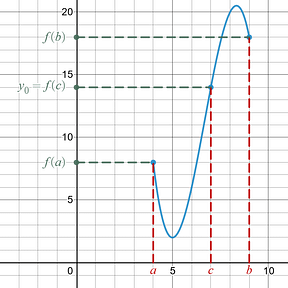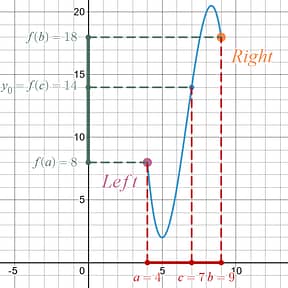Intermediate Value Theorem
Definition: Intermediate Value Theorem
If is a continuous function on a closed interval , and if is any value between , then for some c in .

Note:
– This is a lot of fancy math talk to let you know that as long as your graph does not have any breaks in it (continuous), then you are guaranteed to get every y-value between the two end points or your equation. The intermediate value theorem is a natural extension of knowing that an equation is continuous (has no breaks).
– Here is the same idea with some numbers attached.

– If you start at the left endpoint y = 8 and draw to the right endpoint y = 18 , and you are not allowed to lift your pencil (continuous), you are guaranteed to draw through every y-value in between them. So, for example, you are guaranteed to get y = 14 .
– And every one of those y-values will correspond to an x-value that is in your x-interval . So, y = 14 came from x = 7 , which is guaranteed to be between the left end point x = 4 and right end point x = 9 .

